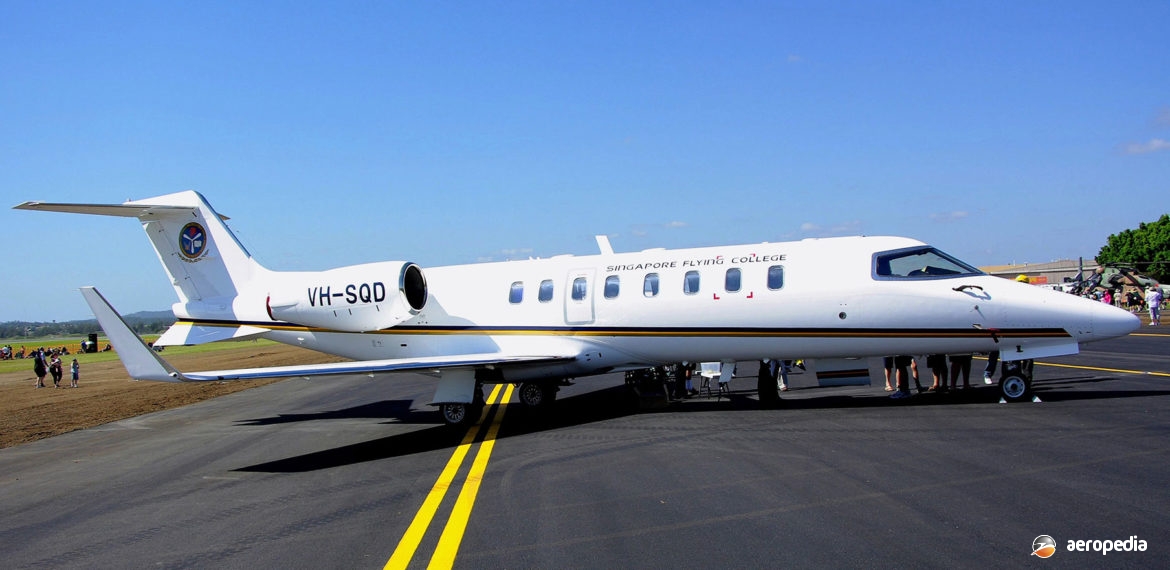Photograph:
Learjet 45 VH-SQD (c/n 033) at RAAF Amberley, QLD in October 2008 (David C Eyre)
Country of origin:
United States of America
Description:
Business and executive aircraft
Power Plant:
Two 3,500 lbst Honeywell TFE731-20-AR turbofans
Specifications:
- Wingspan: 14.56 m (47 ft 9¼ in)
- Length: 17.56 m (57 ft 7¼ in)
- Height: 4.31 m (47 ft 9¼ in)
- Wing area: 28.95 m² (311.65 sq ft)
- Max operating speed: 611 km/h (379 mph)
- Max cruising speed: 859 km/h (534 mph)
- Long-range cruising speed: 796 km/h (495 mph)
- Max certified altitude: 15,545 m (51,000 ft)
- Range with two crew and four passengers and IR reserves: 3,892 km (2,419 miles)
- Empty weight: 6,212 kg (13,695 lb)
- Max payload: 1,046 kg (2,305 lb)
- Loaded weight: 9,298 kg (20,500 lb)
History:
The design of the Learjet 45 was announced at the NBAA convention in the United States on 29 September 1992. The prototype/first production aircraft (N45XL) was first flown on 7 October 1995, being followed by the second aircraft (N452LJ) on 6 April 1996. A further two aircraft were built to assist in the certification programme. Initial FAA certification was received on 22 September 1997 and first delivery to a customer took place when N903HC was delivered on 28 July 1998. By April 2002 some 200 had been delivered.
The 45 was produced in two basic models, the 45 and 45XR, the latter being announced at Farnborough on 21 July 2002. This new model featured a 454 kg (1,000 lb) increase in maximum take-off weight and 3,500 lb st Honeywell TFE731-20-BR turbofans.
A number of Model 45s have been registered in Australia, the main operators being Singapore Airlines, which obtained six, and Cathay Pacific Airlines, both of which use the type for flight crew training, in South Australia, being operated by BAE Systems Flight Training (Aust) Pty Ltd. Examples registered include: VH-SQD (c/n 033); VH-SQM (c/n 035); VH-SQR (c/n 195); VH-SQV (c/n 207); VH-EJK (c/n 007); VH-CXJ (c/n 152); VH-PFS (c/n 168) and VH-ZZH (c/n 204). A further example was imported for Execujet in 2005, becoming VH-VVI. The 45 is generally similar to the Model 31 and was designed to have the docile landing characteristics of the 31 Series but with better fuel efficiency, maintainability, and reliability. These parameters were achieved by the construction of a new larger fuselage, wing and tail unit. Total fuel capacity is 3,426 litres (754 Imp gals).

